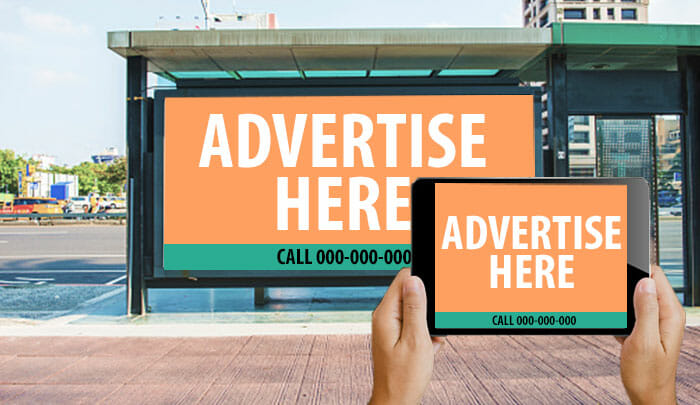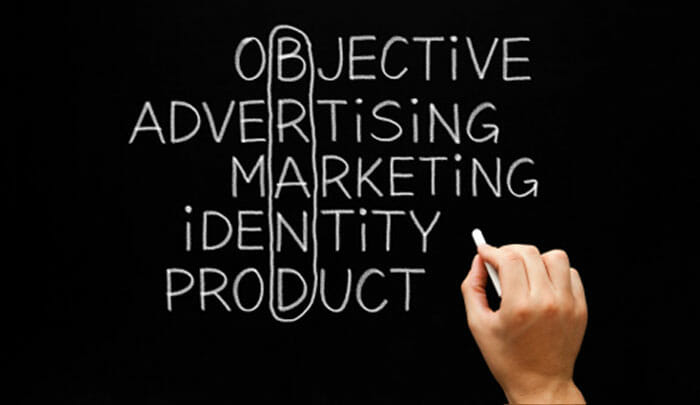Editor's Note: Jim Peake is a marketing writer who joins us to share a comprehensive breakdown of the ways that traditional marketing can be useful in today's Internet marketing landscape. Peake is a contributor at addiction-rep, where a version of this article first appeared.
Inbound marketing and internet-based channels have become the preferred method of marketing for many companies across the U.S. – and beyond. In the past, businesses turned to public relations outreach, TV and print ads, outbound calling, etc. to try to build an audience as well as a larger awareness of their brand. These “outbound” tactics make up what is now often referred to as traditional marketing.
Believe it or not, internet marketing and traditional marketing methods are not wholly opposed to each other. Outbound marketing is still alive and well. OK, arguably not well, but it is alive. Many of its primary tactics are still viable by themselves, and in some cases, they’ve morphed into the strategies of internet marketing.
Anyone with a traditional marketing background who understands how traditional principles apply to the Internet will have a significant advantage over someone who came who came up in the digital age. The two parties have much to learn from each other, but there is already is a lot of overlap, and some traditional marketers have even evolved and adapted to the ways of the internet.
Before we get into how traditional marketing can be integrated into internet marketing, it needs to be clear how the two strategies differ. In this essay, we’re going to take a look at four main topics:
- Inbound vs. Outbound Marketing
- Traditional vs. Internet Marketing Channels
- Traditional Marketing Philosophies
- How Traditional Marketing Can Converge with Internet Marketing

What Is The Difference Between Inbound And Outbound Marketing?
For decades, outbound marketing was the primary method of advertising for businesses all over the world. Outbound marketing involves serving up an advertisement or promotional piece to the masses. Think of television commercials and billboard ads.
Granted, even if companies wanted to reach a wide audience through outbound marketing, they often did research to target certain markets where their message would be received more favorably. Still, outbound marketing consists of blasting out a message and hoping for the best. It’s a very impersonal way of trying to attract consumers’ attention and convert them into a customer.
Inbound marketing, meanwhile, offers the opportunity to make personal connections with potential customers, and it primarily takes place on the internet. It starts with optimizing the company’s website and then using social media, search and other channels to try to lead people to the website. Once on the website, visitors will have a chance to go through a “sales funnel” that leads to money eventually exchanging hands.
Here are some other key points to take away when comparing inbound and outbound marketing:
- Inbound marketing content, in most cases, is much, much cheaper to produce than outbound marketing material. Thus, many small businesses are left out of the outbound marketing game.
- Outbound marketing is generally more intrusive than inbound tactics.
- Outbound marketing is also referred to as interruption marketing, while inbound is sometimes called permission marketing.
- Consumers are not only learning how to tune out outbound material, but they have easy access to devices that help them do the job. Think of fast-forwarding DVRs, call-blocking features on phones, etc.
- Half of marketers in the business-to-business, business-to-consumer and nonprofit sectors ranked inbound marketing as their primary lead source, according to a 2014 Hubspot report.
Although businesses in the U.S. and beyond are gravitating more and more toward inbound marketing, companies that have completely pulled up their stakes from outbound marketing have experienced difficulties. In 2010, Pepsi abandoned commercials and other forms of outbound marketing so it could focus its efforts on a large social media campaign. The soda manufacturer reportedly lost millions (perhaps even hundreds of millions) of dollars in sales over this span.
Also, Pepsi-Cola fell from the No. 2 soft drink in the U.S. to No. 3 (behind Coca-Cola and Diet Coke) by the time the campaign was called off. Social media by itself may have not been the downfall of Pepsi back then, but pulling out of the Super Bowl ad race that year did not help.

Traditional vs. Internet Marketing Channels
Traditional marketing largely concerns outbound methods, while the more modern internet marketing deals mostly with inbound tactics. To clarify which methods fall where, let’s break down the differences in traditional and internet marketing channels.
Traditional channels:
- Radio and television
- Billboards
- Publications (magazines, newspapers, journals)
- Self-produced printed material (brochures, flyers, etc.)
- Telephones (telemarketing, cold calling, etc.)
- Face-to-face (such as conferences, trade shows, etc.)
Internet (new media) channels:
- Websites and blogs
- Social media (Facebook, Twitter, YouTube, Instagram, LinkedIn, etc.)
- Search engines
- Mobile
- Videoconferencing and webcasts
- Podcasts
Looking over those two lists, you should be able to see some crossover between the two disciplines. For example, television commercials easily find their way to the internet now (even showing up when users don’t want them), and audio ads are played between songs on Pandora, Spotify, etc. Press releases have also made an easy tradition.

Traditional Marketing Philosophies
At one point, many companies were able to dedicate many resources toward marketing a specific product or product line. In most cases, those marketers aimed their specific product at a specific audience.
This is where the 4 P’s of traditional marketing came in handy. The 4 P’s for a product can be identified either before or after all promotional material has been completed.
Let’s go over what the 4 P’s stand for:
1. Product
With the product in mind that you’re trying to push, you need to try to determine a product-market fit. Basically, how much demand would there be for this type of product or service? Will your featured offering satisfy the demand for it?
The product phase of the 4 P’s usually starts with creation of a minimum viable product (MVP), aka a prototype. Early in the process, you want to gather a focus group that can view and try out the prototype and then give you feedback. What did they like and not like? Are there any features missing? Anything excessive or unnecessary?
If it’s a physical product, this is the point where you can determine if it should come in different color and sizes. This is also where you need to make your value proposition clear: How does your product or service differ and improve on similar offerings?
2. Price
Now that you’re pretty set on what your product or service will be, you have to make sure that you don’t price yourself out of the market – or that you undervalue your item. Are you trying to sell something that almost anyone can afford, or is it a more distinguished product with a high buy-in?
Here are some factors to take into account as you narrow down the price (or price range) of your product:
- The cost to produce it: It’s obviously not feasible to charge the consumer less than what it costs in parts, labor, manpower, etc.
- High-end vs. affordability: Are you trying to convey quality with your product, or value?
- The size of the market: Have you determined if your product is fit for a mass audience, or are you targeting a niche? What’s the potential reach of your product, based on your research during the first stage?
- The level of competition: How competitive is your market? What are other companies charging for a similar product?
- Economic level of the market: Even if your target market is niche, your product doesn’t necessarily have to carry an exorbitant price tag. When you’ve figured out the target market for your product, you need to have a rough idea of the economic level of those individuals, and thus tailor your product’s price to that audience.
3. Place
This step doesn’t usually keep marketers up late at night like it used to, but it used to be a make-or-break part of the process. In which physical market are you going to place your product? Which retailers will you use? Or is there alternate way you’re going to try to get your product in consumers’ hands? Do you have to go through a middle man or reseller, rather than direct to consumer?
Place is now often referred to as “distribution” when marketers are using the 4 P’s process. The rise of the internet has made the distribution of products easier, and often faster. Thus, the weight marketers put on place is diminishing in comparison to the other 3 P’s.
4. Promotion
The promotion element of the 4 P’s has three primary objectives:
- Raise awareness of the product or service (or brand)
- Generate sales
- Create brand loyalty
For a particular product, marketers need to have in mind a goal, target audience, and the industry in which it resides. Marketers will give a certain weight to each factor when concocting a plan to promote the item. The ways they can begin raising awareness of the product are infinite, which is why the promotion step of the 4 P’s is the most complex. Which channels can your company afford to go through, and which ones make the most sense for the item you’re promoting?
4a. The Promotion Mix
The promotion (or marketing) mix plays a role in the last element of the 4 P’s, but it contains so many variables that it can an extensive study by itself. Which channels a company is going to use and how many are crucial questions marketers must ask when beginning to promote a product or service.
Marketing experts might disagree on which components make up the promotion mix, especially in the modern era, but the following variables get at the core of what the traditional promotion mix is:
- Advertising
Advertising is when you have to pay to get your content shown on a mass media format – television, newspapers, magazines, etc. This type of marketing is almost always non-personal.
- Direct Marketing
Slightly more personal than advertising, direct marketing targets individual consumers with a customized message and tries to build a relationship. Classic direct marketing channels include snail mail, catalogs and telemarketing.
- Personal Selling
Personal selling takes direct marketing a step further and actually gets you in front of the consumer. This face-to-face type of marketing occurs at trade shows, sales presentations, etc. Like advertising, personal selling can often be a very expensive marketing method, as it usually involves a lot of traveling in order to meet potential buyers face to face.
- Publicity (or Public Relations)
Public relations is a viable part of the marketing and communications efforts of both digital and traditional marketing agencies. Public relations is not only as about dealing with negative press as it comes out, but it also involves trying to get a company’s products or employees in front of the media. This is a way of getting your products or brand mentioned in the newspaper or on television or radio without having to pay for the spot.
- Sales Promotion
If you have a new product to sell, are you going to run a certain promotion to entice people to make the purchase, especially if they would be hesitant to do so otherwise? In most cases, it’s better to have somebody buy your product at a discounted price than to not have them make the purchase at all. How will you make consumers aware of the promotion? All of the four methods above could work, but advertising and public relations channels are the most common.

How Traditional Marketing Can Converge With Internet Marketing
When looking over the components of the promotion mix, it’s easy to see that a company can leverage both digital and traditional marketing methods to achieve their goals. It doesn’t have to be one or the other.
For example, any creative image designed for a magazine or newspaper can easily be shrunk to fit as a banner ad on an external website, such as a news website. Also, a television commercial can be uploaded to the web and used on YouTube and other video-streaming sites. Under direct marketing, the classic method of mailing a current or potential customer can now be replicated via email.
Many job positions have been able to cross over from the traditional to the internet marketing world, or they now involve a blend of both disciplines. As mentioned previously, a public relations employee is as relevant for a traditional marketing firm as it is for a digital-based agency. Graphic designers and video marketers also have the ability to bide their time fairly seamlessly between both disciplines.
Integrating Traditional Marketing With Internet Marketing
While most bigger corporations do a mixture of traditional marketing and new media outreach, many are still trying to get out of the habit of keeping the two disciplines isolated. These are the companies where you’d see marketing and communications as two separate departments, and where even sales may be yet another detached area. These departments may even operate on different floors or in different buildings from each other.
If they aren’t already, these types of departments need to be more integrated within companies. Employees who practice traditional methods and those in internet marketing need to be working side by side. They both could be learning significantly from each other. Professional sports organizations, for example, are notorious for keeping their digital, print marketing, communications and public relations teams all fairly segregated from each other.
Also, some employees need to be entrusted with being able to handle both types of responsibilities. If traditional marketers aren’t making their own efforts to get more acquainted with the ways of the web, then companies should be taking the initiative to help them grow as a marketer by modernizing their skill-set to some degree.
Below are a few ways a traditional marketer can work on acquiring a digital skill-set, particularly if they expect to have a hand in web copywriting.
How A Traditional Marketer Can Transition Into An Internet Marketer
If you have a traditional marketing background but are looking to become entrenched in the internet marketing field, either for a new company or a different position with the same company, here are seven tips for preparing yourself:
- Read Fervently
Your industry is evolving and the internet is constantly changing, so it’s imperative to stay current with the latest news and developments. Therefore, figure out the best news sources and blogs for your industry, and then dedicate at least a half-hour to one hour on reading relevant web-based material daily.
- Write Frequently
Start a blog, if you haven’t already, and try to compose a new post at least weekly or twice a week. Spill your expertise about your trade, including lessons learned, case studies and more. Also, experiment with different formats of the post and try to incorporate photos, videos, polls, screenshots, etc.
- Try Your Hand at SEO
SEO is more crucial for some industries than it is for others, but no web marketing department or agency should ignore it nonetheless. Therefore, start experimenting with SEO, such as creating an account on Google AdWords: Keyword Planner. Once you have an idea of what people are searching for, be sure to optimize your blog posts, rather than just writing off the cuff and assuming people will find it.
- Become Active on Social Media
If you don’t have them already, create accounts on LinkedIn, Facebook and Twitter. Try to seek out and follow like-minded individuals. If somebody follows you first, follow them back – as long as they appear to be a real user. Start sharing your blog posts to these channels, and be sure to share other articles relevant to your industry or niche. Don’t forget to interact with your followers as well, such as commenting or liking their posts.
LinkedIn is very important here. It’s been cited as the most effective social media platform for companies that do content marketing, according to recent reports. Be vigilant on this platform.
- See and Follow What the Experts Do
Figure out who the leading companies and individual “thought leaders” in your industry are, and then closely observe how they operate on social media, blogs, their websites and other online areas. Now that you know what the gold standard is, try your best to replicate the success of those entities.
- Create a White Paper, Guide, eBook, etc.
Once you have the hang of writing a solid blog post, try your hand at a longer version: a white paper, eBook, etc. This could be brand-new content from scratch, or you could cull from your past blog posts in order to produce a new, longer creation. Be sure to incorporate an ample amount of media into your web-based guide.
- Build an Email List and Send a Newsletter
Try to coax your blog visitors into subscribing to your blog by email, and also ask any close social media contacts you can add them to your email list. Once you’ve built up a sizeable email list, start experimenting with blasting an eNewsletter either monthly or weekly. This newsletter can contain an all-new message, or it could recap your latest blog content and entice your contacts to click through to your blog.

Conclusion
You don’t see many marketers today who solely practice the traditional methods, but they’re still out there. If they want to start adapting their skills to the web, they can follow the seven strategies outlined above. With a willingness to learn, they can quickly leapfrog their younger colleagues who only understand marketing as it relates to the web.
A deeper study of the 4 P’s and promotion mix are just the start to helping an internet marketer become more well-rounded. It also wouldn’t hurt if they pick up an old marketing textbook from the 1980s and 1990s and see what still applies today, as well as gain a few ideas for how to change their methods to a degree.
Whether an internet marketer is struggling or thriving, adding (or at least understanding) the traditional techniques to their repertoire is only going to provide a boost. The companies that employ them will be all the better for it too.
Learn more with the following classes:
Metrics-Driven Demand Gen in a Multichannel World
Top of the Funnel Tactics for Inbound Marketing
Content Marketing Implementation: Executing a Winning Content Program
Visit the Online Marketing Institute to browse over 400 classes in the digital and social media marketing space.
